#CelineJustAroundTheCorner
Text
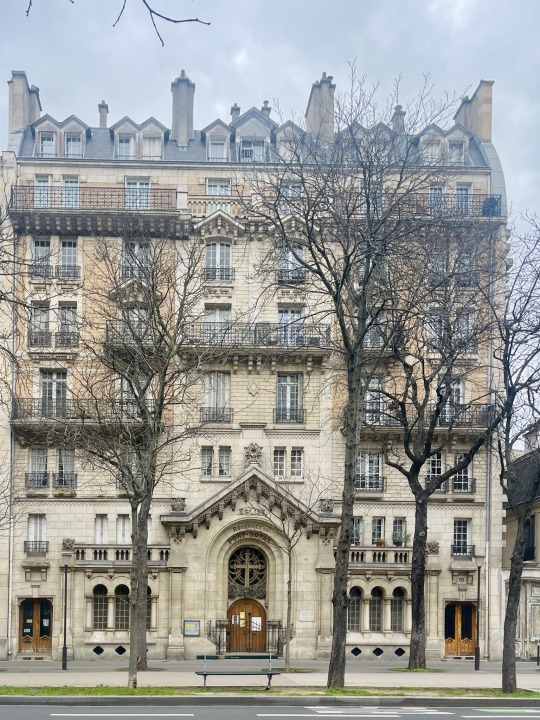

.
Au Détour d’Une Rue… (Just Around The Corner)
The little church that is integrated into a residential building.
From afar it looks like any other building but when you get closer it looks like a church and it is indeed; The Port-Royal Temple
Until the middle of the 19th century, the French Protestant community lived in its regions of origin, but from 1850 onwards, it left its traditional bases and settled throughout France. This diaspora naturally benefited the city of Paris. As a result, the second half of the 19th century was, until 1914, a very active period for the construction of Protestant places of worship in Paris. The history of the worship association of the Église Réformée de Port-Royal fits into this context: it is the former Gobelins section of the Plaisance parish, located in the 14th arrondissement. It was founded in 1898 by pastor Frantz Jacot, who had the temple built at his own expense, to plans by architect Adolphe-Augustin Rey (who also built the Batignolles temple and the rue Titon temple).
The temple is unique in that it is integrated into a residential building. Modest in size, it is neo-Romanesque in style. The nave is lit from above by a "belle époque" zenithal glass roof. Its neo-Byzantine ornamentation recalls Pastor Jacot's family's stay in Saint Petersburg, where his father was a Siberian wood merchant. The magnificent wooden pews lining the temple and the woodwork in the main sacristy are made of Siberian oak. The façade, on boulevard Arago, features an elaborate Latin cross over the entrance door. The interior is decorated with 22 mosaics depicting scenes from the life of Christ or parables.
3 notes
·
View notes
Text
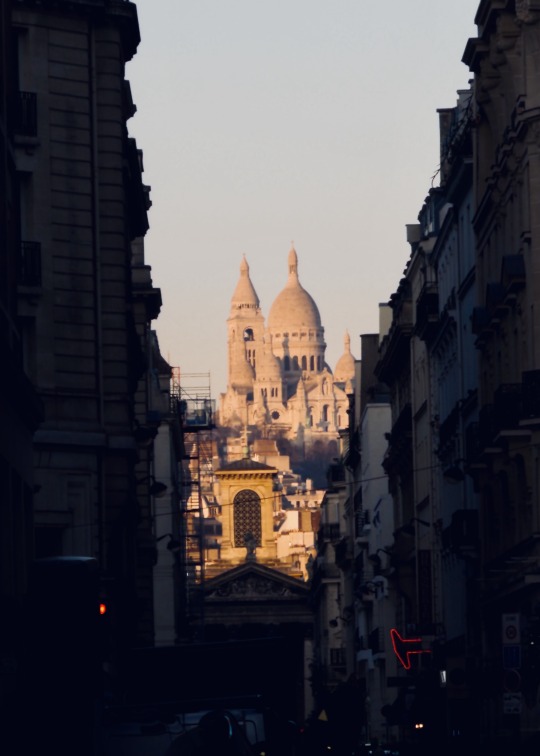
.
Au Détour d’Une Rue… (Just Around the Corner)
Juxtaposition: Le sacré cœur… from les Grands Boulevards.
I’m always surprised to get a glimpse of diverse landscapes when I turn a corner and I’m nowhere near said landscape.
I had seen the view on social media. J. had showed me the spot once when we walked by but when I had previously walked by I really needed to look for it. This time the sun was hitting the Sacré Cœur perfectly while the street I was walking on was in the winter end of the day shadow.
The picture is not super sharp (iPhone zoomed picture) but the memory will stay.
3 notes
·
View notes
Text
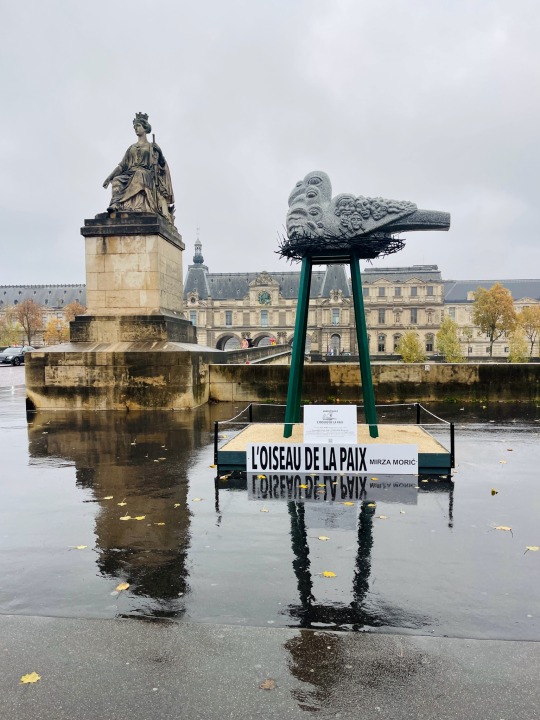
.
Au Détour d’Une Rue… (Just Around the Corner)
L’oiseau de la Paix de Mirza Moric will be on display until February 2024
At the start of 2022, Mirza Moric began creating a sculptural work “The Bird of Peace” dedicated to the victims of wars around the world.
His motto “Nothing is impossible if you believe in the sublimation of Art”. Leaving traces by creating works of testimony for humanity is essential for him. “The Bird of Peace” will be a work to remind everyone that the Peace symbolized by the bird is essential for humanity. The bird installed on its nest is ready to take off. The bird being the messenger of peace, hope is thus expressed.
Mirza Moric was born in Bosnia-Herzegovina in 1954, but he has lived in Paris since 1977
2 notes
·
View notes
Text


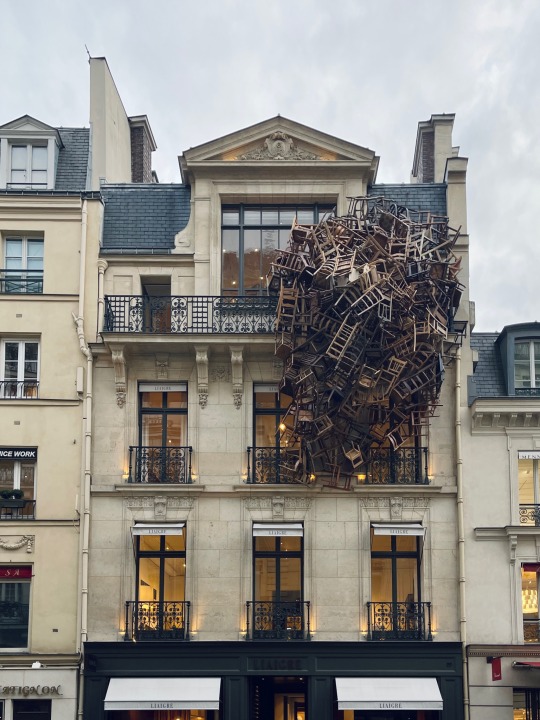
.
Au Détour d’Une Rue… (Just Around the Corner)
Once again Interior architecture and design group Liaigre uses its showroom on Faubourg Saint honore (well technically it’s more its facade this time) to showcase another artist, after Felice Varini, this time it’s Japanese installation artist Tadashi Kawamata.
Titled Nest in Liaigre, the artwork reveals reclaimed wooden furniture stacked on top of one another, an assembly done in the spirit of freedom and spontaneity.
5 notes
·
View notes
Text


.
Au détour d’une rue… (Just Around the Corner)
I was always gushing about how much art there were in Singapore streets, I guess we always think the grass in greener elsewhere but to be fair there’s so many art display all around town at any given time. From art piece by Subodh Gupta at Le Bon Marché or Anamorphic Illusions by Felice Varini while crossing a square there’s no lack of beautiful art in Paris. This time I was on my way to another art installation I had read about when I stumble upon those 2 pieces. (Unfortunately it was the last day and I missed the other 2 pieces a few streets away).
RERO - UPDATE Feat. Stéphane Parain.
From the website https://reronews.fr
UPDATE is a journey of monumental sculptures in public space produced by the Gilles Treuil Endowment Fund in partnership with the Association of Shopkeepers of Faubourg St Honoré and organized by Nicolas Couturieux and David-Hervé Boutin (L’art dans la Ville).
Conceived in 2012 by RERO in collaboration with Stéphane Parain, this series of busts sees the light again. Adapted for the occasion in XXL format, it takes over three emblematic locations in the center of Paris and puts their history and evolution into perspective.
The creation of each artwork follows the same principle: the confrontation between the aesthetic codes of classical statuary and a set of terms borrowed from digital culture, written in capital letters and crossed out with a line. For the artist, whose work has been exploring contemporary contradictions and paradoxes for over a decade, this juxtaposition of two eras and two modes of representation, one material and the other immaterial, invites us to measure the evolution of techniques.
UPDATE also allows us to grasp the architecture of contemporary power: its classical representation through statuary and urban planning is succeeded by its contemporary organization in the form of hypertext, keywords, computer codes, and algorithms.
2 notes
·
View notes
Text

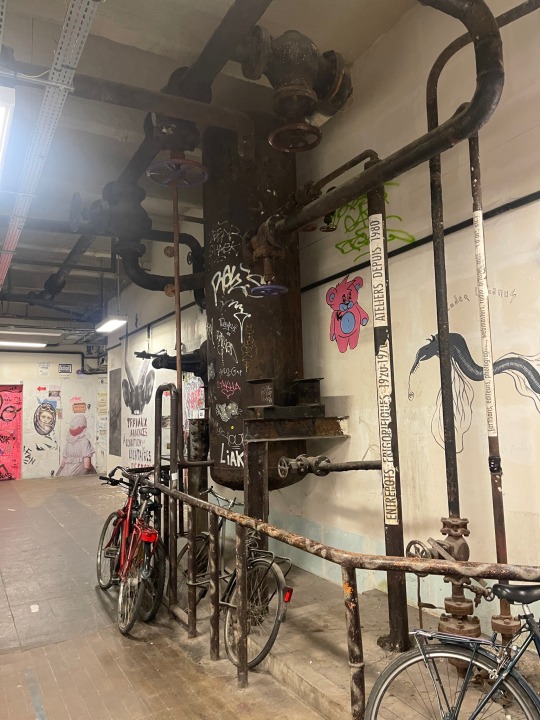
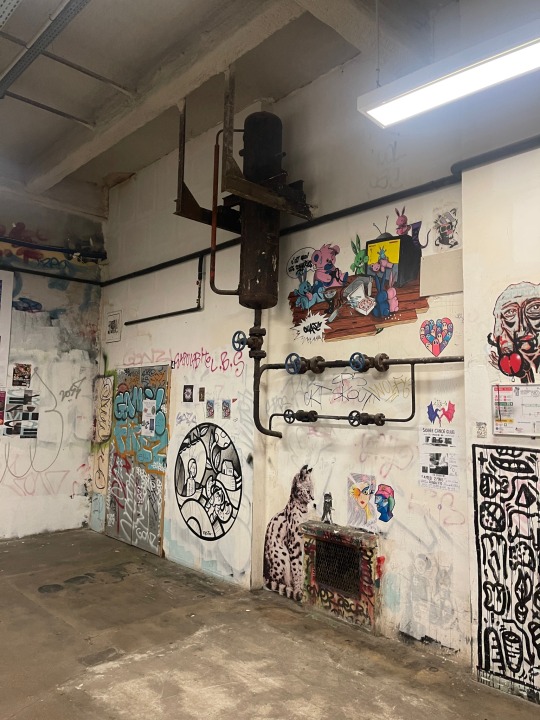
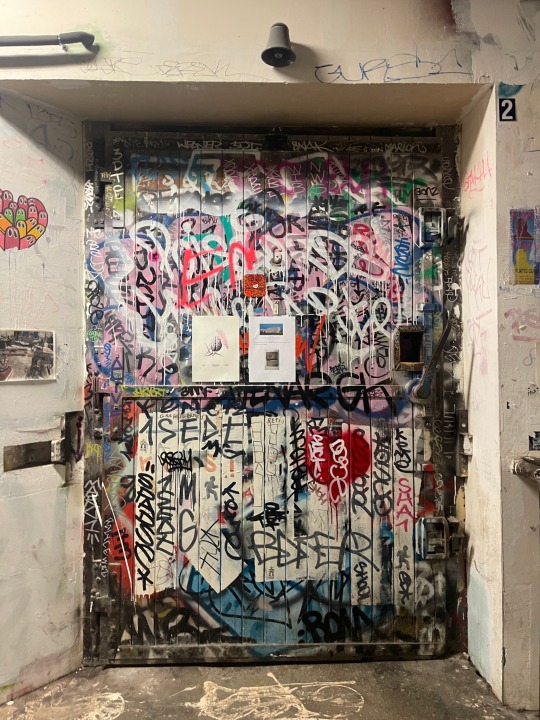
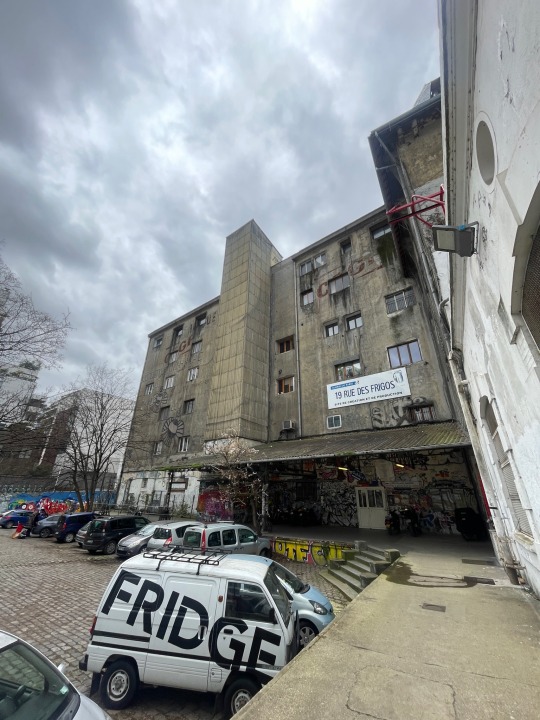
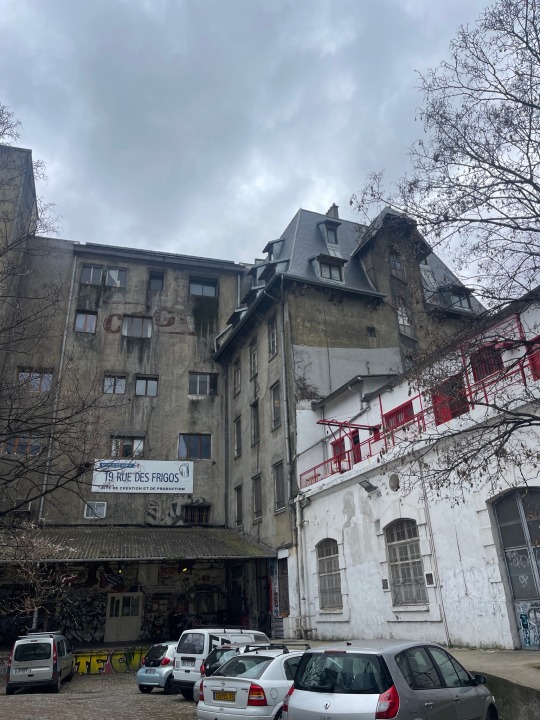
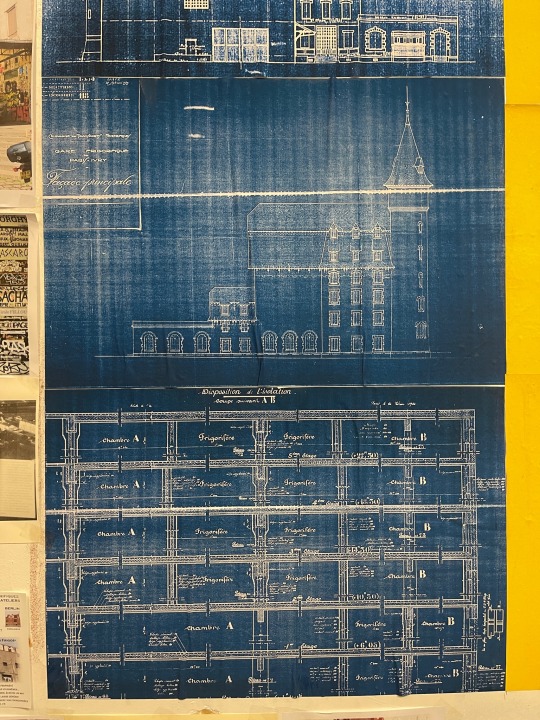
.
Au Détour d’Une Rue… (Just Around The Corner)
Les Frigos
What a great little find by just walking around and daring to go in.
In October 1919, the Compagnie Ferroviaire de Paris-Orléans began building "Frigos" to store perishable goods delivered to the capital from all over France. The Paris-Ivry Frigorifique station came into being in April 1921, after some 18 months of construction: 24 cold rooms with a usable surface area of 5,000 sqm, a volume of 17,000 cum "frigorifiques", and a load capacity of 5 to 6,000 tons.
In its heyday, trains used to enter the main body of the building from the east towards several switchable goods unloading platforms, two of which were indoor. Little trace of this remains today, but in the north courtyard (parking lot) there are still some old rails, barely visible as they are covered in asphalt. The many rust-ridden pipes that still run along the corridors, and the heavy insulated doors that remain in places, bear witness to the fact that this was a giant refrigerator. Machines produced cold and ice on site, and rails fixed to the ceilings took over from the railroads to transport veritable cable cars of foodstuffs up and down the floors thanks to 4 freight elevators.
At the end of the 1960s, the planned demise of Les Halles de Paris and the opening of the Rungis market in 1969 (due to increased demand for food) brought the cold stores to a halt, leaving them virtually abandoned for some 15 years by their current owner: the SNCF (since 1945).
Disused, but leased by small industrialists, in the 70s it attracted comedians, visual artists and musicians, before becoming a mecca for Parisian avant-garde artistic activity in 1985. With its curious Alsatian-inspired architecture, the "Frigo" stands as an active witness to the history of the former Quai de la Gare. (https://www.les-frigos.fr)
https://www.les-frigos.fr
3 notes
·
View notes